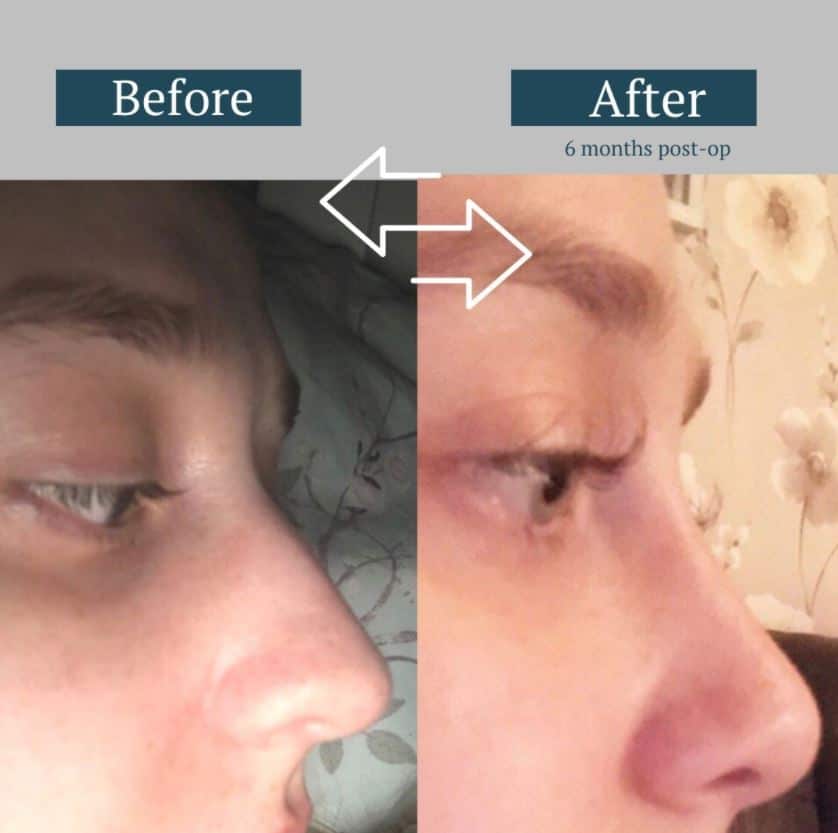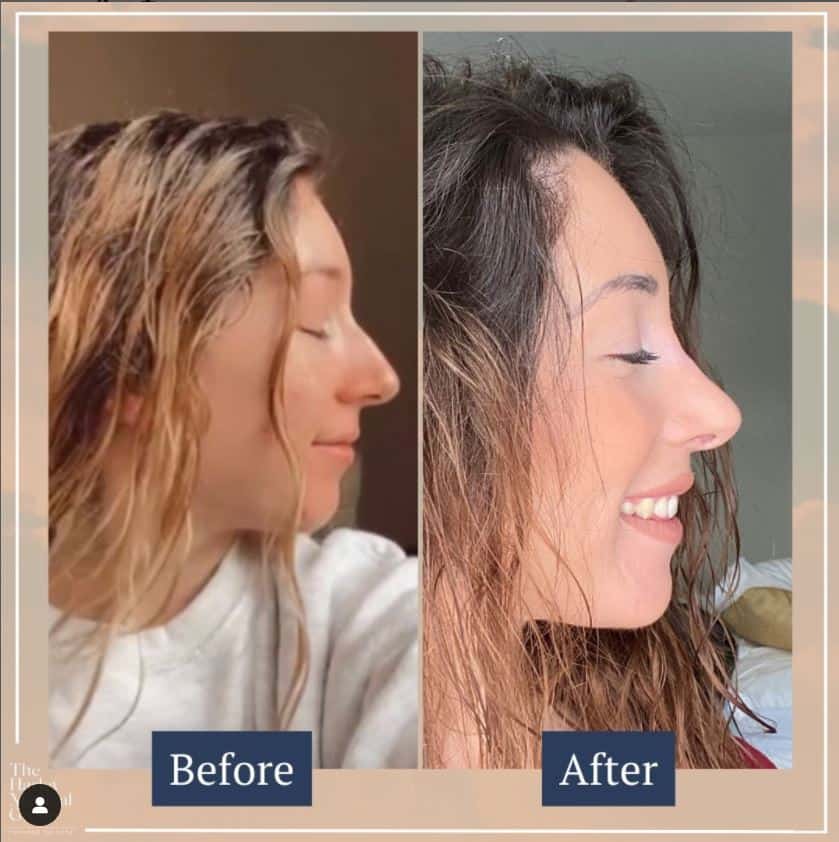Medically Reviewed April 2023, by Premjit Randhawa - Consultant Aesthetic Rhinoplasty Surgeon
Regardless of the type of rhinoplasty that has been performed, the recovery process requires patience, and adequate time must be allowed for recuperation following a procedure as complex as nose reshaping.
You will notice results after a few weeks when the swelling and bruising starts to reduce, however the the entire recovery process can take up to a year to complete, breaking it down into manageable portions and milestones can help with understanding: what is involved, the typical rate of progress, and how results will change and improve over time.
An important element of the Rhinoplasty recovery process involves preventing infection. Although infection rates following this kind of surgery are low at around 0.62%, if the complication does occur it can lead to a number of unwanted effects. Wound infection can impair the healing process and if allowed to spread, even cause sepsis. This is why it is important for all patients to understand what they can do before and after their surgery to avoid infection.
In this article we’ll take a deep dive into how to prevent infection, what to look out for in recognising an infection and what to do if you suspect an infection.
View this post on Instagram
Although it may seem like infection prevention is only relevant after surgery, there are steps that can be taken in the run up to the procedure. The most important change to make is to stop smoking if that is currently an issue. Smokers are more likely to experience serious complications during and after surgery, including impaired wound healing and increased susceptibility to infection. So it is a good idea to bear in mind how much time will be needed to engage with a smoking cessation program when booking a procedure.
In the initial few days after surgery, it is important to keep any dressings, splints or packing dry and untouched. Careful facial cleansing is permitted during this time providing that this does not disrupt the incision site. Once the bandages have been removed you will be able to clean the incision site according to the instructions and clean your face more thoroughly. It is important to only use lukewarm water for at least 2 weeks after surgery to avoid irritating the wound.
The answer to this question depends on one major factor, the type of rhinoplasty that has been performed. You can read in detail about the differences between open and closed rhinoplasty here. In summary though, open rhinoplasty involves incisions being made on the external skin of the nose and in closed rhinoplasty incisions are made inside the nose. Makeup products and applicators commonly harbour bacteria, even if cleaned regularly, so it is essential that no makeup is applied on top of, or around incision sites. This is especially important in open rhinoplasty.
Exactly when makeup can be applied will be confirmed by your surgeon or nurse counsellor on an individual basis, but after 1-2 months of recovery, most patients will be able to apply makeup as normal excluding the incision site.
Being aware of how to recognise an infection is crucial for all patients who are on their rhinoplasty recovery journey. Commonly, infected wounds can become red, swollen and painful. There may also be an unusual discharge that appears pus-like, yellow or foul smelling. If the skin begins to change colour, especially dark brown or even black, this is considered an emergency and immediate medical attention should be sought. Signs that the infection has become more widespread are fever, sweating and even confusion.
If you don’t have any of the worrying symptoms but are simply concerned that things don’t look or feel right, you should contact your nurse counsellor or surgeon at The Harley Medical Group here. However, if you experience any of the more severe symptoms, it may be necessary to seek emergency care straight away.
Following completion of the rhinoplasty, bed rest and elevation of the head are essential.
There will be some variation in postoperative management depending on which surgical approach was used but a splint will be placed over the bridge of the nose for support and protection in most cases. Cold packs may also be placed over the eyes to reduce any bruising or swelling. Sterile gauze may have been placed inside both nostrils to absorb any fluid; this is called nasal packing. A sensation of congestion and inability to breathe through the nose are common whether or not packing has been used. There will also be tenderness around the eyes and cheeks. Appropriate medication will be offered to manage any pain felt after surgery.
You can read more about the different types of rhinoplasty here.
During the first few days of your rhinoplasty recovery, bed rest in an elevated position is required; extra pillows can be used to maintain this position. This will help reduce any swelling and give the body the rest that it needs. A week off work or other obligations is recommended, although it is important not to rush this process and longer should be taken if necessary.
You may notice swelling or bruising around the eyes and cheeks, this is common and happens as a result of disruption to the blood vessels surrounding the eyes and nose during surgery. Any bruising and swelling will begin to subside as recovery progresses. At around day 7, the surgeon may decide to remove the splint covering the bridge of the nose and remove any stitches that aren’t dissolvable, this will take place during the postoperative appointment.
It is at this point when the first signs of results can be observed. However there will most likely be significant swelling in the nose, so it won’t be possible to fully appreciate the results of nose reshaping just yet.
Depending on the individual, it may be possible to return to work and other daily activities at the beginning of week 2. However exercise should be avoided, and activity kept to a minimum until at least the end of week 3 depending on the surgeon’s advice.
Any swelling or bruising may begin to subside, but it is not uncommon for this to persist for longer especially in the tip of the nose. The overall shape of the nose will continue to evolve towards the final result as the swelling reduces. By the end of this time period there will often be very little evidence of surgery.
Depending on the advice of the surgeon, it may be possible to resume any strenuous exercise or activity. It is possible that the tip of the nose may still be swollen or feel numb, but this will continue to resolve as recovery progresses.
By 6 months, the rhinoplasty recovery healing process is considered completed and any visible scarring will be in the process of fading.The extent of scarring will vary depending on the type of rhinoplasty you have chosen to have, you can read more on this here.

It can take up to a year to fully appreciate the final results of rhinoplasty because swelling continues to dissipate in some areas of the nose for as long as this. At this point, the final results and renewed sense of self-confidence can be enjoyed.

Our lovely patient Bethany came to us as she had problems breathing through her nose due to having a deviated septum. She opted for an Open Rhinoplasty surgery with the wonderful Dr George Samouris, and just look at how incredible the transformation was. He listened to her concerns and goals, and guided her through the consultation period enabling her to confidently choose us for her cosmetic procedure. Her rhinoplasty recovery journey was smooth and she is thrilled with her results.
If you are considering rhinoplasty, a library of before and after images from patients who chose rhinoplasty at The Harley Medical Group is available for viewing here. There is also the opportunity to view images of results achieved by specific surgeons during a free consultation.